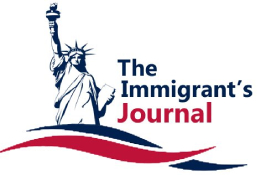By: Chris Tobias
New York City is contending with stubborn inflation, slowing job growth, and the lingering economic fallout from Trump-era tariffs that disrupted supply chains and pushed prices higher. For residents already grappling with steep housing, food, and transit costs, these pressures threaten to erode both financial stability and economic opportunity. In this challenging climate, mayoral candidate Zohran Mamdani has unveiled an ambitious platform aimed at delivering immediate affordability and long-term equity—through measures such as fare-free public buses, a rent freeze for rent-stabilized units, and city-run grocery stores, funded by progressive tax reforms. This article explores how Mamdani’s vision seeks to balance bold relief with the fiscal realities facing the city.
- The Inflation and Employment Outlook in NYC
As of mid-2025, consumer prices in the U.S. have climbed by 2.7% year-over-year, while core inflation (excluding volatile food and energy costs) has surged to 3.1%, signaling persistent underlying pressure on the cost of living.
This creeping inflation is particularly detrimental in New York City, where housing, food, medical care, and transit are already major financial burdens for households. Economists warn that continuing inflation, paired with signs of a cooling job market—marked by productivity disruption and job growth slowdown—could set the stage for a stagflation-lite scenario: rising costs and slowing employment simultaneously.
- The Trump Policy Connection: Tariffs and Economic Turbulence
President Trump’s aggressive tariff strategies on imports from countries like China, Mexico, and across Europe have significantly contributed to the present economic anxieties. Tariffs have fueled price increases in goods, disrupted supply chains, and elevated inflation expectations, impacting both consumers and businesses.
In trading sectors, the wider U.S. economy has already seen strained activity—an estimated 245,000 jobs lost directly as a result of Trump’s tariffs. Economists widely criticized these policies, likening them to missteps from the Smoot–Hawley era and warning of compounded costs outweighing any short-term trade benefits. The uncertainty sown by these policies has also eroded business confidence and hampered investment—factors that typically foster employment and economic growth.
- Zohran Mamdani’s Economic Response: Affordability with Equity
Zohran Mamdani’s mayoral platform directly targets affordability and economic inequality. His approach includes:
- a) Immediate Relief Measures
- Free public buses: Eliminates transit costs, easing daily budgets for commuters.
- Rent freeze on rent-stabilized units: Locks in affordability for over 2 million city residents.
- City-operated grocery stores: One per borough, designed to undercut retail markups and reduce food costs.
- b) Financing Through Progressive Taxation
To fund these services, Mamdani proposes:
- Raising corporate tax rates to match New Jersey (from 7.25% to 11.5%).
- Introducing a 2% income tax increase on millionaires.
This revenue would support fare-free transit, universal childcare, and affordable housing construction.
- c) Long-Term Structural Change
Economists have backed Mamdani’s agenda, describing it as a responsible, coherent anti-austerity framework that leverages public power to deliver widespread affordability.
- Balancing Goals with New York City’s Fiscal Realities
Despite its ambition, Mamdani’s plan faces pushback:
- New York City’s projected $36 billion budget gap, compounded by the expiration of federal relief funds, suggests major constraints on expansive public spending.
- Experts warn the rent freeze, while vital for many, risks destabilizing landlords’ finances, potentially reducing affordable housing supply over time—particularly in rent-regulated units already under pressure.
Governor Hochul even signaled reluctance in supporting Mamdani’s heavy tax-lifting approach, highlighting political as well as fiscal hurdles.
- Analysis: A Bold Vision with Practical Challenges
Strengths of Mamdani’s Plan:
- Direct relief to high-burden households.
- Targeted affordability, not across-the-board benefits.
- Endorsements from economists reinforce credibility.
Risks and Challenges:
- Budget feasibility: High initial costs amid fiscal deficits.
- Economic feedback: Tax hikes could incentivize outmigration of capital or high earners.
- Implementation difficulty: Rolling out city-run grocers and fare-free transit involves complex logistics and sustained funding.
Conclusion
New York City’s inflation woes and potential unemployment risks are closely tied to federal-level protectionist policies and tariff-induced pressure. Within this context, Zohran Mamdani presents a strikingly progressive economic agenda grounded in immediate cost relief and public affordability.
His vision aligns with equity-oriented leadership—but real-world constraints must be met with nuanced policy design. If successfully implemented, his plan could reshape NYC into a more affordable, inclusive city. If miscalculated, fiscal sustainability risks overshadowing bold intentions.

